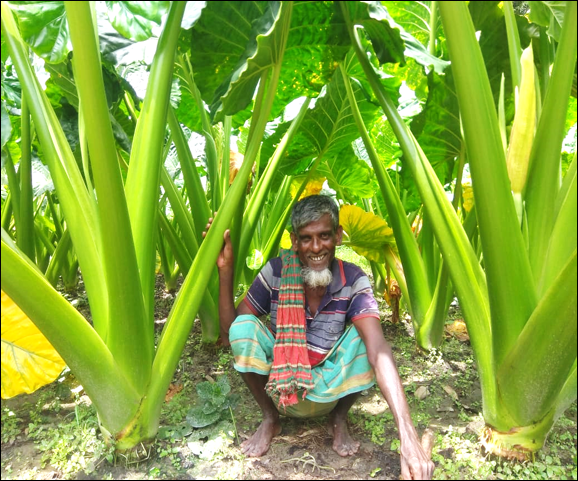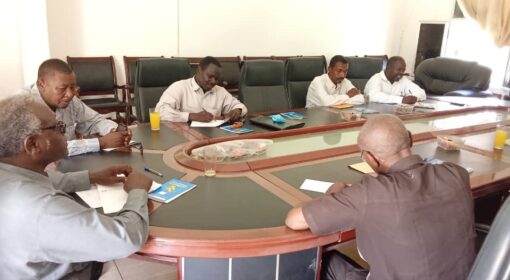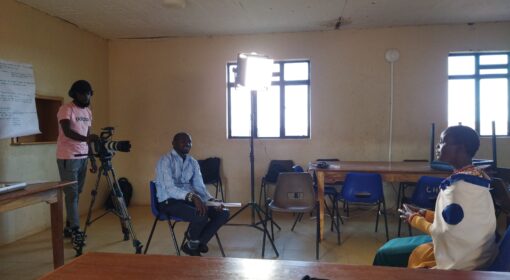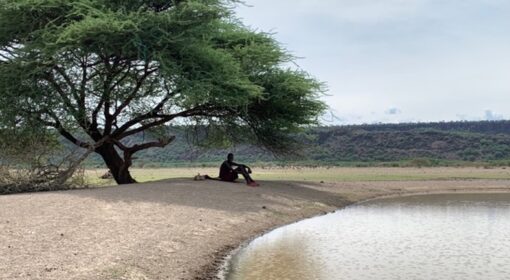By Zahid Amin Shashoto (Uttaran Bangladesh), Jannatul Naim
This blog is part of a dossier on locally-led adaptation, featuring insights and lessons from the Reversing the Flow (RtF) program. RtF empowers communities in Bangladesh, Burkina Faso, Ethiopia, Kenya, and Sudan to build climate resilience through direct funding and a community-driven, landscape approach.
In the southwestern coastal region of Bangladesh, waterlogging has made large parts of farmland unusable, affecting nearly 2 million people each year. The problem stems from climate change, poor drainage worsened by polders, mismanaged rivers, and shrimp farming, which blocks natural water flow. This leads to prolonged flooding and severe salinity, deepening the region’s vulnerabilities.
In response, the Paani Committee, a local civil society movement, has been advocating for addressing this complex problem through an ecological and indigenous approach known as Tidal River Management (TRM). TRM, a century-old practice, demonstrates how community engagement and nature-based solutions can effectively promote incremental growth while maintaining a delicate balance between the ecosystem and the economy.
Since the late 1980s, the Paani Committee has been mobilizing movements and advocating with the government to adopt TRM as a sustainable solution to waterlogging and to promote landscape restoration. As a community-driven initiative, the Paani Committee emphasizes the importance of local involvement in water management, recognizing that community insights are essential for effective and sustainable landscape restoration.
TRM leverages tidal flows to restore farmland and revitalize rivers, serving as a powerful nature-based solution tailored to the specific needs of affected communities. This grassroots approach ensures that solutions are not only ecologically sound but also aligned with the realities and priorities of those most impacted.

The Origins of the Paani Committee
The Paani Committee was formed in the late 1980s to address the waterlogging crisis caused by the government’s Coastal Embankment Project, which disrupted natural tidal flows and worsened river siltation. Local communities, excluded from project planning, advocated for indigenous, nature-based solutions but lacked formal platforms to engage with decision-makers. Collaborating with the local NGO Uttaran, they initiated a Cash-for-Work Program to excavate canals, alleviating waterlogging in 51 villages. In 1990, Uttaran united local leaders under the Paani Committee, which played a pivotal role in developing and promoting Tidal River Management (TRM), a sustainable, community-driven solution, through advocacy and a landmark conference.
Tidal River Management (TRM): A Community-Led Solution
The Paani Committee’s TRM approach is deeply connected to landscape restoration by integrating local knowledge, nature-based solutions, and sustainable practices. Here’s how it relates:
Restoring Natural Water Flows: Landscape restoration often involves re-establishing natural hydrological processes that have been disrupted. TRM achieves this by allowing tidal waters to flow back into floodplains, which clears accumulated sediment, reduces waterlogging, and prevents further land degradation. This flow restores rivers and floodplains to their natural states, supporting ecosystem health and bringing back key stone species like river dolphins.
Sediment Management and Land Elevation: By using tidal flows to bring sediment onto the floodplains, TRM naturally elevates land levels, making previously unusable waterlogged areas viable for agriculture again. This is a core aspect of landscape restoration as it helps rebuild soil structure, enhances fertility, and improves the land’s capacity to support plant life.
Ecosystem-Based Approach: TRM aligns with ecosystem-based restoration methods that work with nature to rehabilitate landscapes. Instead of relying on artificial structures or disruptive engineering, TRM taps into natural tidal movements to renew land and water systems. This ecosystem-centered approach contributes to biodiversity, as restored landscapes can support diverse plant and animal species.
Community Stewardship of Landscapes: Landscape restoration is most successful when communities actively participate in and feel responsible for the process. The Paani Committee’s leadership role ensures that local communities are not just beneficiaries but active stewards of restored landscapes. By monitoring TRM implementation and advocating for policy support, the Paani Committee fosters a sense of ownership and long-term commitment to sustaining restored landscapes.
Climate Adaptation and Resilience: Landscape restoration is essential in climate adaptation strategies. TRM enhances the resilience of agricultural landscapes against rising sea levels and extreme weather. By raising land and improving drainage, TRM helps mitigate the risks of waterlogging and soil salinity associated with climate change, thus making the land more productive and resilient.
Improved Soil Health and Agricultural Productivity: TRM has demonstrated positive impacts on soil health, such as the increase in soil fertility and drainage capacity, allowing for the re-establishment of agriculture. This aligns with the goals of landscape restoration to improve soil quality and promote sustainable agriculture, which supports food security and livelihoods.
The Paani Committee’s approach to TRM provides a replicable example of how locally led, nature-based solutions can contribute to comprehensive landscape restoration by not only rehabilitating degraded lands but also enhancing the ecological, economic, and social resilience of communities.
The Paani Committee understood that TRM offered a sustainable, long-term solution to the waterlogging crisis. Through their advocacy, they pushed for the implementation of TRM in areas like Beel Bhaina, where years of waterlogging had left communities in a state of perpetual despair. The results were remarkable: rivers that had once been clogged with silt became deeper and wider, and farmland that had been underwater for years became usable once again.
Advocacy Efforts
The Paani Committee organized protests and discussions with the government, advocating for TRM instead of large-scale infrastructure projects. Their efforts led to the recognition of TRM as a viable solution by the Bangladesh Water Development Board and its inclusion in the Bangladesh Delta Plan 2100.
Challenges and the Future
The Paani Committee continues to face challenges, such as ensuring timely compensation for landowners. They remain focused on expanding TRM to other areas to adapt to rising sea levels and climate change. Their grassroots movement has become a model for sustainable water management and community empowerment.
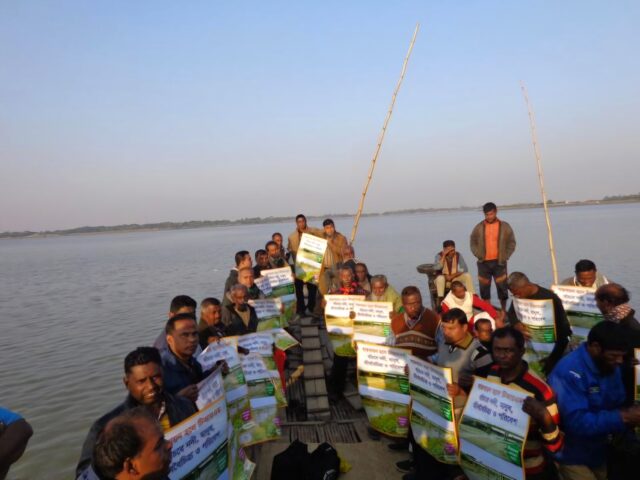
A Legacy of Grassroots Empowerment
The Paani Committee’s story is one of resilience and community action. In an area often overlooked by government policies, the committee has shown that local people can find sustainable solutions to environmental problems. Their work on TRM has not only restored rivers and farmland but also demonstrated the power of communities to shape national water policies.
While their work continues, the Paani Committee’s success is a model for other grassroots movements in Bangladesh and beyond. As climate change becomes a bigger threat, their experience shows that the best solutions often come from the people directly affected.
How Tidal River Management (TRM) Transformed the Life of Md. Touhidur Rahman
Md. Touhidur Rahman, a 45-year-old farmer from Tentulia in Satkhira District, struggled for years due to waterlogging that damaged his crops. His land wasn’t producing enough to support his family, and he relied on traditional farming methods without knowing climate-smart techniques.
Waterlogging, caused by blocked tidal flows due to embankments, made farming difficult. However, the introduction of TRM brought new hope. By allowing tidal waters to flow back into floodplains, TRM helped clear sediment, improving drainage and making the land usable again.
Touhidur adopted better farming practices, like using local vegetable varieties and organic fertilizers, which reduced costs and improved soil quality. He also started growing taro (Maan Kachu), a crop well-suited to the conditions created by TRM. His yields improved, and his financial situation got better.
Inspired by his success, other farmers in the village began to follow similar methods, transforming the area from a struggling, waterlogged region into a thriving agricultural community.
Touhidur’s story shows that TRM not only solves waterlogging but also revives livelihoods and strengthens communities. By improving soil fertility and restoring natural water flow, TRM creates an environment where farmers can thrive using climate-smart and sustainable farming practices. Touhidur believes that TRM has helped farmers produce better, safer agricultural products, ensuring food security for their families and communities.
